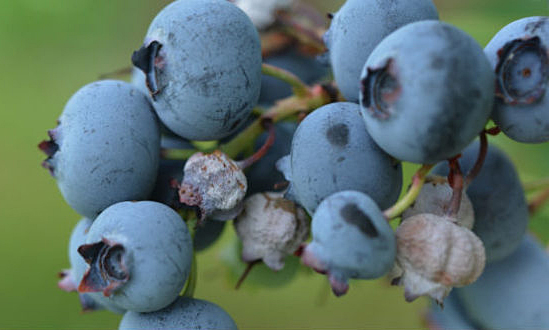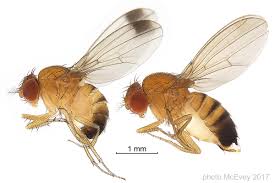growing blueberries
Site Selection and Planting
Choose at least two varieties for pollination. Plant at least one plant per person; two to four plants if you plan on fresh eating and freezing or preserving berries. Consider using blueberries in the landscape! All the deciduous blueberries have good fall foliage colors and ornamental twigs.
Choose a site with at least 6 hours of sun a day where you can irrigate them in the summer. Well drained soil free of weeds and rich in organic matter is ideal. For most soils, work in well-rotted sawdust or bark at planting so that the soil is 1/2 to 1/3 organic matter. Avoid mushroom compost as it is usually too high in pH.
Blueberries depend on both wind and insect pollination, so plant bushes within 20′ of each other for fruit set. Compact Highbush and Highbush varieties should be spaced 4′-6′ apart, with rows at least 8′ apart. Dwarf varieties can be spaced 1′-3′ apart. When planting, set the plant in the soil so the crown is just barely covered and mulch 1″-2″ thick. Remove weak wood (low branches near the base of the plant), and cut strong stems by 1/3rd.
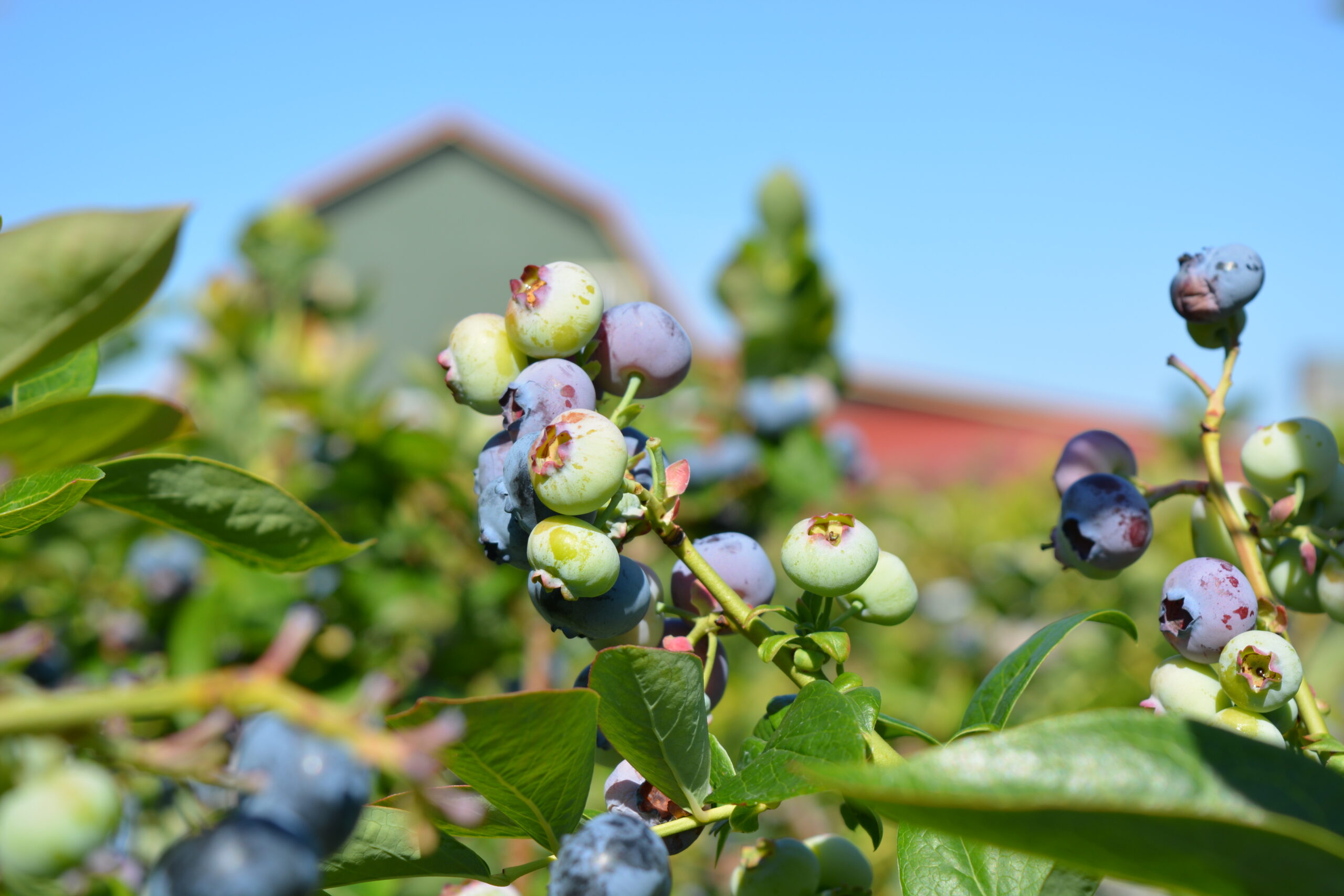
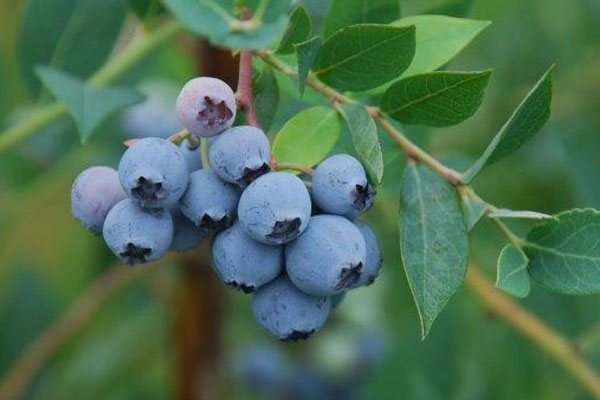
Pruning and Care
Remove blossoms the 1st year. Annually, in early spring, remove weak wood, and older, twiggy wood by cutting to the ground. Brightly colored wood with long (3″ or more) laterals bears the most fruit. Cutting older wood out promotes this kind of growth.
The most common problem with blueberries is not pests or diseases, but problems with establishing young plants. Blueberries are shallow rooted plants that need summer moisture. Weed or grass competition or inadequate irrigation are usually the problem. Irrigating with drip tape, maintaining 2” of mulch with annual additions, and regular weeding are recommended for success. Blueberries are relatively heavy feeders, so annually apply an acid fertilizer.
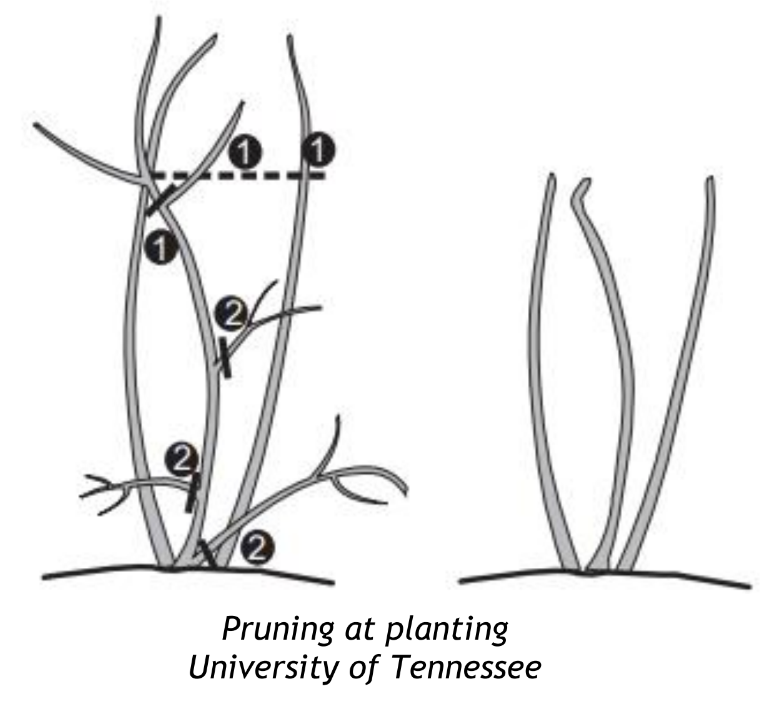
Pests & Disease
Mummy Berry
The most common disease of blueberries in the home garden, this fungal disease infects the blooms. As the berries set and ripen, they shrivel and become gray in color, dropping to the ground. The ‘mummies’ then release spores the following spring to infect the new blossoms. Severe infections can also cause the twigs to die back. If you see mummy berry affecting your plants, remove and destroy affected berries. Shallowly cultivating in the fall and applying more mulch can further bury the infected fruit.
Spotted Wing Drosophila (SWD)
This fruit fly lays their eggs on ripening soft fruit, hatch, eat inside the fruit until the fruit drops, and then exit to pupate in the ground. If you are finding small white maggots in your berries at harvest, this is the most likely culprit. You can confirm by setting out vinegar traps to monitor. Reduce the amount of time ripe berries are on the plant by harvesting frequently and using/freezing immediately. If flies are present in large numbers, you can use Spinosad sprays.
Birds
Protect ripening fruit from birds. Mylar ‘scare tape’ can be effective when bird pressure is low. Nets can be draped over the plants, but check daily and remove birds who have gotten in. A frame over the berries for netting allows easier harvest than draping nets.
